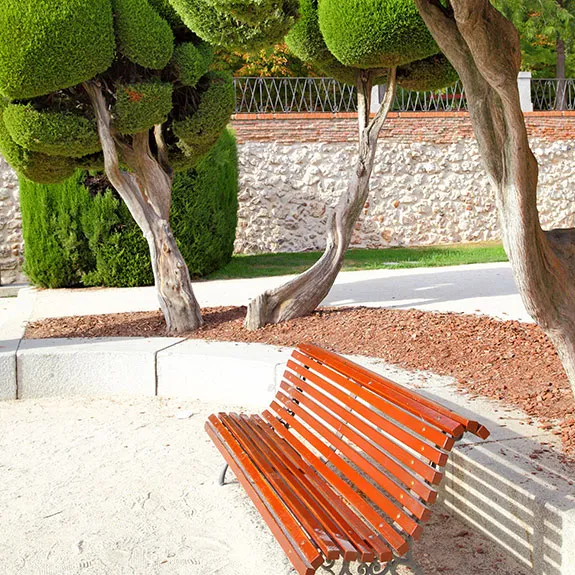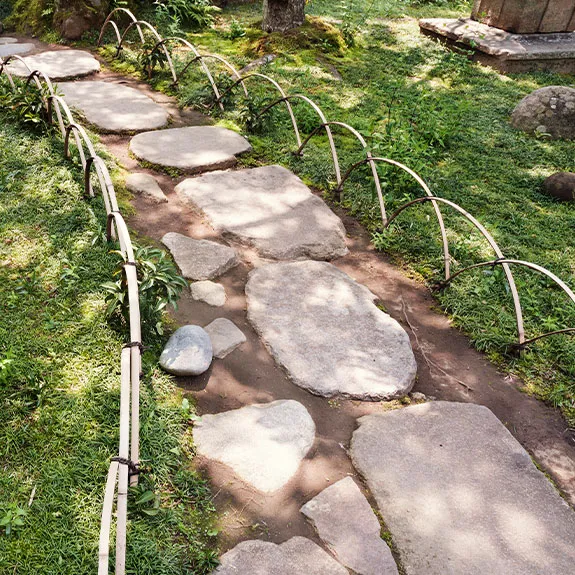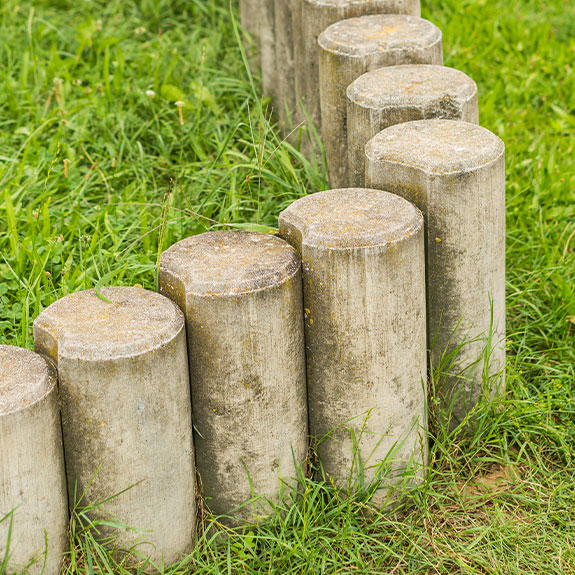Choosing durable outdoor building materials is essential to ensure that your outdoor spaces remain in top condition despite the passage of time and exposure to the weather. When deciding, it is important to consider factors such as climate, traffic level, aesthetics and, of course, budget.
In this article, we’ll walk you through the most durable options for exteriors, from flooring and siding to paint and wood options. In the end, you’ll know which is the best durable outdoor option for your needs and environment.

Key factors when choosing durable outdoor materials
Before choosing an outdoor material, consider these aspects:
- Climate and exposure: Climate variations, from intense sunshine to constant rain or frost, impact the durability of materials. For example, humid areas require materials with high water resistance, while extreme climates may require more resilient materials, such as some specialized coatings.
- Traffic level: Areas with high traffic of people or vehicles need very resistant materials, such as concrete or pavers.
- Style and functionality: Choosing materials that harmonize with the design of your outdoor space and serve a practical function is key to achieving a balanced combination of aesthetics and strength.
Durable outdoor flooring options
Outdoor pavers are an important part of creating functional and safe areas. Here are some of the most durable options:

- Concrete: This material stands out for its high resistance to weather conditions and heavy traffic. It is ideal for areas of frequent use and adapts well to different styles.
- Natural stone: Offers an elegant finish and is naturally weather-resistant. In addition, its non-slip surface is ideal for areas with pools or areas prone to moisture.
- Outdoor ceramics: Ceramic tiles are resistant to humidity and temperature changes, and offer a wide variety of designs. It is an excellent choice for terraces and patios.
- Pavers and bricks: These materials are ideal for creating durable, easy-to-maintain surfaces. Pavers offer great resistance to wear and tear and adapt well to different styles.
- Synthetic resins: Resin flooring is modern, durable and requires little maintenance. In addition, they are slip and wear resistant, although they usually require professional installation.
Durable coatings and paints for exterior facades
Exterior siding and paints are critical to protecting building walls. Some of the durable options include:
- Single-layer and lime mortar: Both materials are used on facades to protect them from the weather. Single-layer mortar is applied in a single layer, which facilitates installation, while lime mortar offers high breathability, ideal for areas with temperature changes.
- High-strength paints: Elastomeric and silicone paints are formulated to withstand extreme conditions of temperature and humidity. Siloxane paint, for example, is ideal for areas of high outdoor exposure and has water-repellent and highly breathable properties.
- Application of primers: Before painting a facade, applying a primer helps improve paint adhesion and prolongs its durability, ensuring a uniform and resistant finish.
Wood and composite options for exteriors
For those seeking a natural and warm look, wood and composite materials are an excellent choice for exteriors:
- Treated wood: Treated wood resists moisture and weathering, although it may require regular maintenance to maintain its appearance and durability.
- Composite materials (WPC): Wood-plastic composites, such as WPC, offer a finish similar to that of natural wood, but with greater strength and less maintenance. They are ideal for terraces and patios.
- Sustainability: Choosing materials from sustainable sources helps reduce environmental impact and create greener outdoor spaces.
Tips for maximizing the durability of exterior materials

To ensure that your outdoor materials stay in good condition, follow these maintenance tips:
- Regular maintenance: Regular cleaning of floor and wall coverings helps to eliminate the accumulation of dirt and moisture, factors that accelerate wear and tear.
- Waterproofing treatments: Applies sealants and waterproofing products on pavements and coatings to protect them from water and other climatic agents.
- Crack and fissure repair: Checking and repairing small cracks in a timely manner avoids major problems and prolongs the durability of the materials.
Choosing the best durable outdoor option will depend on the type of project, the climate of the area and the level of traffic the materials will withstand. Whether you choose concrete pavements, mortar coatings or composite woods, each option has specific advantages to guarantee the resistance and functionality you need. If you are looking for materials for your exterior, in ParatuReforma you will find everything you need of the best quality in the market.
How can an outdoor pavement be protected against wear and tear?
To protect the exterior paving against wear and tear, it is advisable to apply a sealer that acts as a protective barrier against moisture and UV rays. In addition, regular cleaning helps to prevent damage from residue buildup.
What advantages does natural stone have over other outdoor materials?
Natural stone is weather-resistant, slip-resistant and has an attractive, timeless aesthetic appearance. It also requires little maintenance, making it an excellent choice for exteriors.
When is it advisable to use elastomeric paint on facades?
Elastomeric paint is ideal for facades in areas with extreme climates, since its elasticity allows it to expand and contract without cracking. It is highly impermeable and protects against humidity.
What types of maintenance extend the life of exterior materials?
Some key care includes regular cleaning, applying sealants and waterproofing, and repairing cracks. These steps help prevent deterioration and keep materials in good condition longer.






